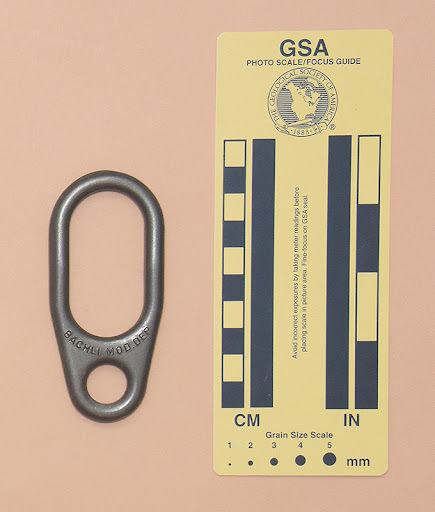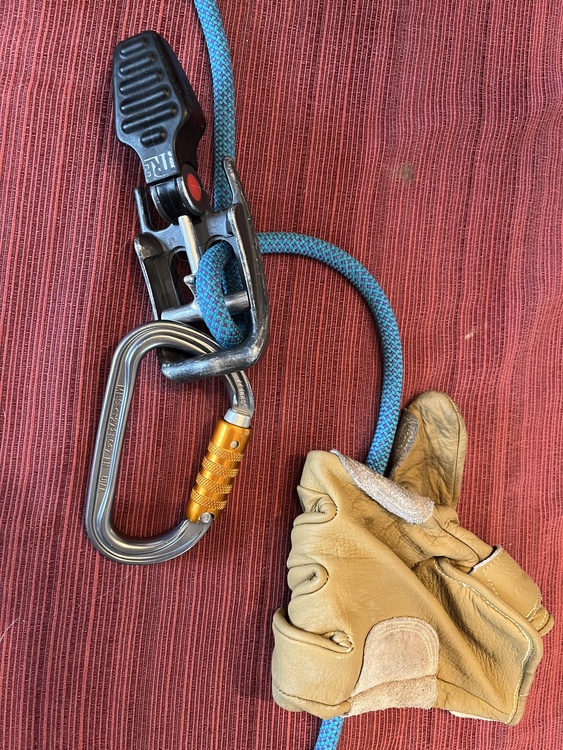Belay technique history
|
|
In the dark ages of climbing, there was the body belay. Then came a leap into stitch plates followed by tube belay devices. Was there ever an "era" of Munter hitch belaying in this country (US) or has the Munter always only been an emergency option? Was it different in Europe (west vs east) and Asia? Any older-than-me timers can pitch in your experience? |
|
|
I first saw the Munter Hitch illustrated in a Larry Penberthy article in a Mountain Safety Research newsletter about 1972. It was called the Italian Hitch. I don't know it's true origin, but later from Austrian immigrants (guides) to Canada I learned it had been long in use there (Austria). I can't speak for the eastern US, but in California it never seemed to be particularly common, perhaps it's most common use starting in the 1980's was by some guides (me included) for belaying seconds off the anchor, and making good use of the quick conversation to a clove hitch. I don't know when Stitch plates first showed up the US. Pretty sure they were "invented " in the sixties, in Germany or Switzerland, and by a fellow of the same name. The first time I remember seeing one in use was about 1975, by Bill Zaumen, who was an ex gunkie relocated to California. But I was already aware of their existence. And Sticht plates slowly gained in popularity through the 70's, and other belay devices also showed up. The Bachli seilbremse (spelling?), the figure 8. I have a feel for the history and evolution of various body belay methods, but if I recounted what I "know " it will be less accurate than what I have already written. |
|
|
In the US we went from hip belay to Sticht plate, but then various options appeared in parallel. The Sticht plate evolved in various directions, eventually turning into a tube and so giving rise to the modern Reverso-type plaquette. For a while Chouinard was selling a device that worked like a carabiner brake. A device called the Tre Serius also used a brake bar principle. Various figure-eight devices, originally aimed at rappelling, were also used for belaying, but generally had insufficient friction. For a while there were a host of garage-factory thingies that were supposed to be good for belaying. I used a Munter hitch (on my harness) for maybe a year or so but moved on to other gadgets. I don't think the Munter ever caught on in the US--at the time I was the only climber I encountered using it. In Eastern Europe, the Munter was quite popular when used in a direct belay on the anchor, something that US climbers are just beginning to discover. |
|
|
As someone who is really interested in climbing history I just wanted to say that I think preserving this history and sharing it is actually really cool and important and I want to thank those of you who lived through this history for taking the time to share your experiences and knowledge with us. It is very significantly appreciated. |
|
|
When I started climbing it was hip belay, yup it worked, caught several 20-30 foot falls that way. Not the most pleasant but that’s what we knew. Also bowline on a coil way to tie in before harnesses. The first sticht plate I bought was a simple plate with a 9 and 11mm holes but they bound up when pulling in rope quickly. Then they came out with one with a spring on it that kept the rope from binding, great improvement. I still have it and still use it, it requires no special instructions for use and can be used for all types of climbing. |
|
|
|
|
|
Ricky, if you haven't read any of these, try to find a copy: Belaying the Leader, Richard Leonard. On Snow and Rock, Gaston Rebuffat. AND, On Ice and Snow and Rock, Rebuffat again, Mountaineering, Alan Blackshaw. Old editions of Mountaineering, The Freedom of the Hills. I don't have any of them, but studied all of them 1971-73. Some perspective can be gained there, and from YouTube. There's a bunch of Rebuffat on YouTube that will make you shake your head, like belaying a client up to a ledge on the Bonatti Pillar with an unanchored shoulder belay and taking him off AS the client is pulling up onto the ledge, so he is can step aside and get out of the way. I've done similar myself, but in rather mild alpine terrain, not in the middle of the NW face of Half Dome. But as a guide he must of caught plenty of falls. And an awesome climber. There's a YouTube of Bonnington taking an old and portly Whillans on a short rock climb, Whillans belays Bonnington (leading) with a shoulder belay. But same with Whillans, the man was a great climber with many, many miles. If he was still around and climbing, I'd let him belay me as he chose, without hesitation. |
|
|
I just remember back in the early 70s using a swami belt made from 1 inch webbing and carabiners. That’s all we had. And tennis shoes or leather hiking boots. To belay, I would wrap the rope around my back and find a way to secure my feet to hold me in place. Rope burn was a concern. Rappelling was fun! But I’m still alive, so what the hell. |
|
|
Eric Craig wrote: The guy I first climbed with had one of these. His was bronze, and he preferred it for longevity over the aluminum figure 8s that would wear grooves pretty quickly. I still have my first (heavily grooved) Kong figure 8. Nice thing is you could use the oval-shaped clipping hole as a Sticht plate when belaying. I finally went to a Sticht plate (what I still use today) when I got tired of the twist the 8 puts into ropes. Unlike the above poster, I dislike the spring, and ripping it out was the first thing to do when buying a new one. Nice thing about a spring-less Sticht plate is it locks up easier when someone falls. As for Munters, they seem to me to induce even more twist than an 8, so I place them in the emergency use category. |
|
|
Like the other old guys here, I went from hip belay to stitch plate. I did learn about the Munter hitch after having to hold someone for an hour with a hip belay. It was the first time I or anyone in our group had climbed with this guy and he lied about his climbing ability when I asked what he could climb. Too bad I did not learn before. :) |
|
|
I'm another hip belay veteran. One aspect of it that I haven't seen mentioned here is that a common, and very valuable, modification was to run the ''climber side' of the rope through a biner clipped into your waist loop/swami belt. This would help keep the rope from sliding too far up or down the belayer's body, and help absorb at least some of the impact of a fall. I don't recall when I first started using 'alternative' belaying methods---though I'm guessing it was sometime in the late '60s. My memory was that we first started using Fugure 8s---as some of us used them for rappelling ( adopted from caving) fairly early, but didn't like them very much ( not much friction, rope twists) and quickly transitioned to Stitch Plates once they appeared. I also experimented with Munters, but also found them to be 'too twisty'--though will still occasionally utilize one ( and even a hip belay) if the need arises---it is always worthwhile to know the 'basics'. |
|
|
This works here, too. Carabiner brake preceded the belay plate, didn't it? |
|
|
Cherokee Nunes wrote: Carabiner brake rappel, simple, effective and carabiners are multi use tools. I had both Robbins books, might still have the first one somewhere as well as the Chouinard catalog from 74. |
|
|
In Yosemite 1970's the six carabiner brake ruled, for rappelling of course. The Sticht plate for belaying had a small following. We all did what Chouinard said we should, through the 1972 Chouinard catalog, and the 1975 one. Like Steve Komito (alledegedly) once said, if Chouinard said we should climb barefoot, he would too. For those that don't know, Komito owned a small store and boot repair shop in Estes Park for about a half century. He was THE place for getting your old school mountain boots or Robbins boots resoled/rebuilt. (There were other places too). Yeah I edited above to delineate between rappelling and belaying device use. Sorry I wasn't clear. |
|
|
I'm remembering the carabiner break system for rappelling, used it for years, but not for belaying--though could have forgotten!!! Steve Komito was ( I'm sure still is) a great guy. For a long time his store was the 'go to' place for climbers visiting Estes. |
|
|
In Washington State, I progressed from the sitting hip belay to, stitch plate, munter and ATC. |
|
|
Started with hip belays then Figure 8. Never owned a sticht plate but a few partners used them. There was a period of a few years before tube devices when we all used Munter hitches. That may have been a regional thing (Mt Woodson), because many people have never heard of it. Still the simplest system but not great for the rope. |
|
|
Like many started with the hip belay often with a carabiner. Except our modification was to run the ''break side' of the rope through a biner clipped into one's waist loop/swami belt. Then when breaking one pulled to the side rather than around which decreased the squeeze. For rappelling a double biner break. I quickly switch to a Stitch plate around 1980 using it for both belaying and rappelling. Then came the various tube's like Lowe's. One partner used the Figure 8 for both. As for the Munter hitch. I recall one partner using it in the late 1980s, early 1990s. I hated it as it twisted the rope terribly. Fortunately it never really caught on. The belay technique that I have used is the boot axe belay. |
|
|
Here's an old thread (minus the pictures) from the Taco: http://www.supertopo.com/climbers-forum/1994101/The-Origin-and-History-of-Belay-Devices |
|
|
Eric Craig wrote: Here it is. (Tre Serius). In my opinion the best belay device ever, except that it had a fatal flaw of wearing in such a way that braking power diminished. |
|
|
I used a hip belay for about a year starting in '72. After that was a Sticht plate (actually a chain link). The chain link was used in some other disciplines. Maybe sailing? And, IIRC, was sometimes called a "snubber" - but I'm going strictly from old memory here. |

 Continue with onX Maps
Continue with onX Maps Sign in with Facebook
Sign in with Facebook

























